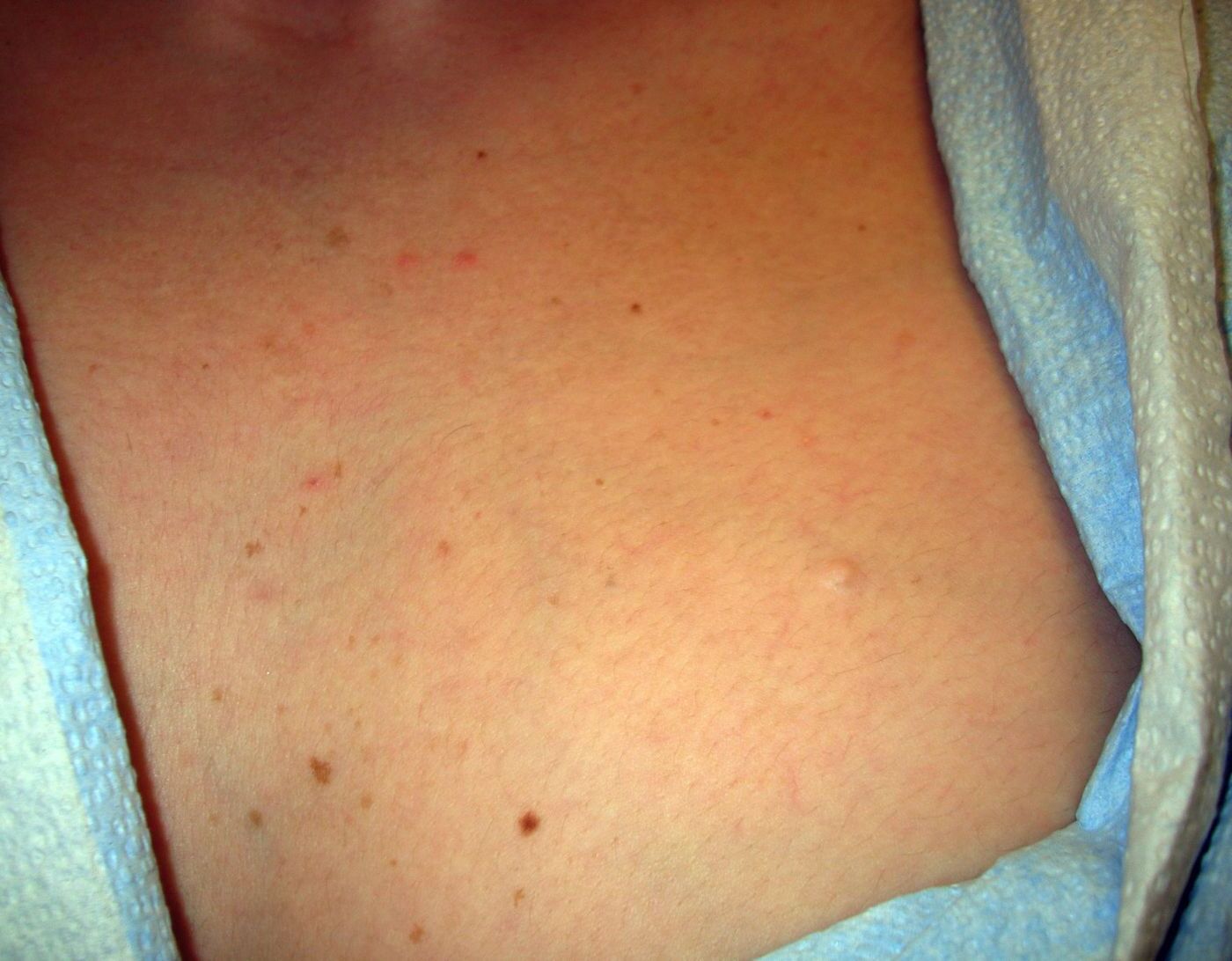
What happens when your body's organs start to fail one after another? Multiple Organ Dysfunction Syndrome (MODS) is a severe condition where two or more organ systems fail in an acutely ill patient. This life-threatening syndrome often results from an uncontrolled inflammatory response triggered by infections, injuries, or other severe health issues. Symptoms can range from confusion and fatigue to irregular heartbeat and loss of consciousness. Early detection and aggressive management are crucial for improving outcomes. Understanding MODS involves knowing its causes, symptoms, and treatment options, which can make a significant difference in patient survival. Let's delve into the complexities of MODS and how it impacts the body.
Key Takeaways:
- Multiple Organ Dysfunction Syndrome (MODS) is a severe condition where two or more organ systems fail due to an uncontrolled inflammatory response. It can be caused by infections, injuries, and other triggers, and early detection is crucial for better outcomes.
- Healthcare providers use tools like the SOFA score to assess the severity of MODS, which can affect various organ systems. Management involves identifying and treating underlying causes, providing supportive care, and using interventions like fluid resuscitation and renal replacement therapy.
What is Multiple Organ Dysfunction Syndrome?
Multiple Organ Dysfunction Syndrome (MODS) is a severe condition where two or more organ systems fail in an acutely ill patient. This syndrome often results from an uncontrolled inflammatory response. Let's dive into some key facts about MODS.
-
Definition: MODS is defined as the presence of altered organ function in an acutely ill patient such that homeostasis cannot be maintained without intervention.
-
Other Names: MODS is also known as Total Organ Failure, Multisystem Organ Failure, or Multiple Organ Failure.
Symptoms of MODS
The symptoms of MODS can be diverse and depend on which organs are affected. Here are some common signs to watch for.
- Symptoms: Symptoms may include confusion, loss of appetite, fatigue, fever, irregular heartbeat, tachypnea, low urine output, nausea, vomiting, chest and abdominal pain, and loss of consciousness.
Causes and Triggers
Understanding what can trigger MODS is crucial for prevention and early intervention.
- Causes: MODS can be caused by infections, injuries, hypermetabolism, sepsis, major trauma, burns, pancreatitis, extracorporeal circulation, multiple blood transfusions, autoimmune diseases, heat-induced illnesses, eclampsia, and poisoning/toxicity.
Pathophysiology of MODS
The underlying mechanisms of MODS involve complex interactions within the body.
- Pathophysiology: The pathophysiology involves a dysregulated inflammatory response, leading to increased capillary endothelial permeability and widespread protein-rich tissue edema. Mitochondrial dysfunction and an imbalance in energy metabolism also play roles.
Stages and Organ Systems Affected
MODS can progress through various stages and affect multiple organ systems.
-
Stages of Dysfunction: Each organ system can be classified into different stages of dysfunction, ranging from mild to severe, defined by specific laboratory values and clinical criteria.
-
Organ Systems Affected: MODS can affect any organ system, including the cardiovascular, respiratory, renal, hepatic, and gastrointestinal systems.
Assessment Tools
Healthcare providers use specific tools to assess the severity of MODS.
- Sepsis-Related Organ Failure Assessment (SOFA): The SOFA score assesses and quantifies organ dysfunction in critically ill patients, evaluating six organ systems: respiratory, cardiovascular, hepatic, coagulation, renal, and neurological.
Incidence and Mortality Rates
MODS is a leading cause of death in intensive care units (ICUs). Here are some statistics.
-
Incidence: MODS accounts for a significant portion of deaths in high-risk patients after surgery.
-
Mortality Rates: The mortality rate ranges from 40% to 90%, depending on the severity and number of organs affected. Advanced age, infection with resistant organisms, impaired host immune status, and poor prior functional status are poor prognostic factors.
Importance of Early Detection
Early detection can make a significant difference in outcomes for patients with MODS.
- Early Detection: Early detection and recognition are crucial in preventing progression. Positive outcomes rely on immediate recognition, ICU admission, and invasive organ support.
Management and Treatment
Managing MODS involves a multi-faceted approach to support the failing organs and treat underlying causes.
-
Management and Treatment: Management involves identifying and treating underlying causes, comorbidities, or complications. Fluid resuscitation, support care, and monitoring including multi-organ support, mechanical or non-invasive ventilation, maintaining fluid homeostasis, and renal replacement therapy are essential.
-
Fluid Resuscitation: Fluid resuscitation is critical to increase perfusion and prevent further organ dysfunction. However, excessive fluid administration can lead to complications like fluid overload and pulmonary edema.
-
Supportive Care: Supportive care includes mechanical ventilation, vasopressor support, and renal replacement therapy to maintain organ function and prevent further deterioration.
-
Renal Replacement Therapy: Renal replacement therapy (RRT) is often necessary to manage acute kidney injury, performed using hemodialysis, continuous venovenous hemofiltration (CVVH), or continuous venovenous hemodiafiltration (CVVHDF).
-
Mechanical Ventilation: Mechanical ventilation supports respiratory function but can lead to complications like ventilator-associated pneumonia and barotrauma.
-
Vasopressor Support: Vasopressor support maintains blood pressure and perfusion of vital organs, though excessive use can lead to complications like vasoconstriction and organ ischemia.
-
Invasive Organ Support: In severe cases, invasive organ support like extracorporeal membrane oxygenation (ECMO) may be necessary to support cardiac and respiratory function.
Related Conditions
MODS is closely related to other severe conditions, often sharing similar pathways and risk factors.
-
SIRS and MODS: Systemic Inflammatory Response Syndrome (SIRS) is an early response to an insult, while MODS is a more severe and prolonged response leading to organ failure.
-
Severe Sepsis and Septic Shock: Severe sepsis and septic shock are critical conditions that can progress to MODS, with 28-day mortality rates ranging from 10% to 60%.
Risk Factors
Certain factors increase the risk of developing MODS.
-
Advanced Age: Older patients are more likely to develop MODS due to decreased physiological reserve and comorbidities.
-
Resistant Organisms: Infection with resistant organisms complicates treatment and increases the risk of mortality.
-
Impaired Host Immune Status: Patients with compromised immune systems are more susceptible to infections and subsequent MODS.
-
Poor Prior Functional Status: Patients with pre-existing conditions or poor health status are more likely to develop MODS.
Prognosis and Outcomes
The prognosis for MODS patients varies widely based on several factors.
-
Development of Sequential Organ Failure: Sequential organ failure despite adequate supportive measures and antimicrobial therapy indicates a poor outcome.
-
High-Risk Patients: MODS is the primary cause of death in high-risk patients after surgery. Risk factors for death due to multiple organ failure should be considered in determining risk stratification.
Special Populations
Certain populations are at higher risk for developing MODS.
-
Pediatric Trauma: In pediatric trauma patients, injuries like drowning, asphyxiation, and abuse carry the highest risk for developing MODS. Mortality rates are significantly higher in these patients.
-
Acute Respiratory Distress Syndrome (ARDS): ARDS can lead to MODS, with mortality rates from ARDS alone at 40-50%, increasing to 90% with additional organ dysfunction.
-
Congenital Heart Disease: Congenital heart disease is associated with an increased risk of developing MODS due to complex interactions between cardiac dysfunction and systemic inflammation.
Complications and Associated Conditions
MODS can lead to or be associated with various complications and conditions.
-
Acute Kidney Injury (AKI): AKI is common in MODS, managed with renal replacement therapy and supportive care to maintain fluid balance and electrolyte homeostasis.
-
Liver Failure: Liver failure can occur in MODS, managed with supportive care, including liver transplantation in severe cases.
-
Pancreatitis: Pancreatitis can lead to MODS due to the release of inflammatory mediators and subsequent systemic inflammation.
-
Burns: Burns are a significant risk factor for MODS, involving a complex interplay between thermal injury, inflammation, and immune response.
-
Extracorporeal Circulation: Procedures like cardiac bypass can lead to MODS due to the activation of inflammatory pathways and subsequent organ dysfunction.
-
Multiple Blood Transfusions: Multiple blood transfusions can trigger MODS due to the activation of immune responses and the release of inflammatory mediators.
-
Autoimmune Diseases: Autoimmune diseases predispose patients to MODS, involving chronic inflammation and immune dysregulation.
-
Heat-Induced Illnesses: Heat-induced illnesses like heat stroke can lead to MODS due to the disruption of thermoregulation and subsequent systemic inflammation.
-
Eclampsia: Eclampsia is associated with MODS, involving severe hypertension, placental abruption, and subsequent organ dysfunction.
-
Poisoning/Toxicity: Poisoning or toxicity from various substances can trigger MODS, managed with supportive care and specific antidotes to counteract toxic effects.
Research and Future Directions
Despite advances, there are still significant gaps in understanding and treating MODS.
- Research Gaps: Further studies are needed to develop effective therapies that modulate the inflammatory response and improve patient outcomes.
Final Thoughts on MODS
Multiple Organ Dysfunction Syndrome (MODS) is a serious condition where two or more organ systems fail in a critically ill patient. It can be triggered by infections, injuries, or severe inflammation. Symptoms vary but often include confusion, fatigue, fever, and irregular heartbeat. Early detection and aggressive treatment are crucial for improving outcomes. Management involves fluid resuscitation, supportive care, and sometimes invasive organ support. Despite advances, MODS remains a leading cause of death in ICUs, with mortality rates ranging from 40% to 90%. Risk factors include advanced age, resistant infections, and poor prior health. Understanding MODS, its causes, and treatment options is essential for healthcare providers. Further research is needed to develop better therapies and reduce mortality rates. Stay informed and proactive in recognizing and managing this complex condition.
Frequently Asked Questions
Was this page helpful?
Our commitment to delivering trustworthy and engaging content is at the heart of what we do. Each fact on our site is contributed by real users like you, bringing a wealth of diverse insights and information. To ensure the highest standards of accuracy and reliability, our dedicated editors meticulously review each submission. This process guarantees that the facts we share are not only fascinating but also credible. Trust in our commitment to quality and authenticity as you explore and learn with us.


